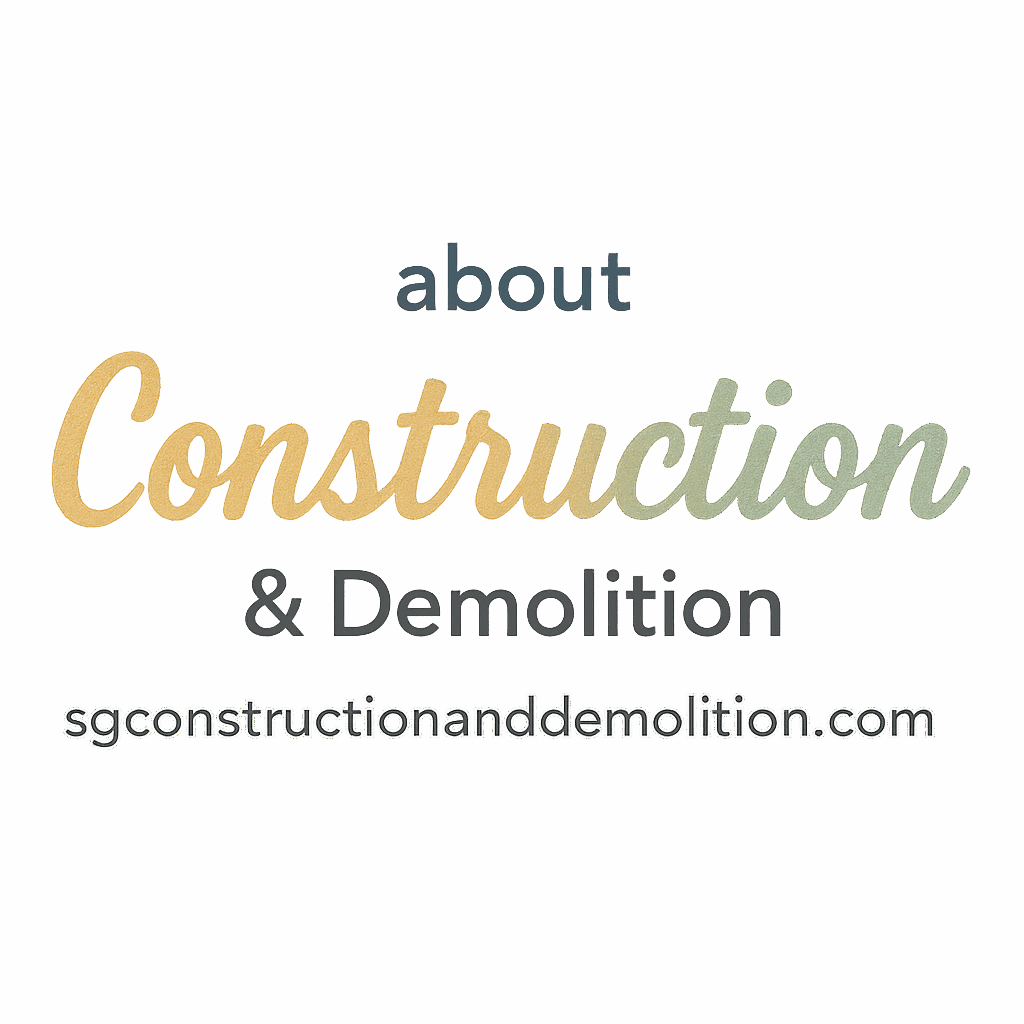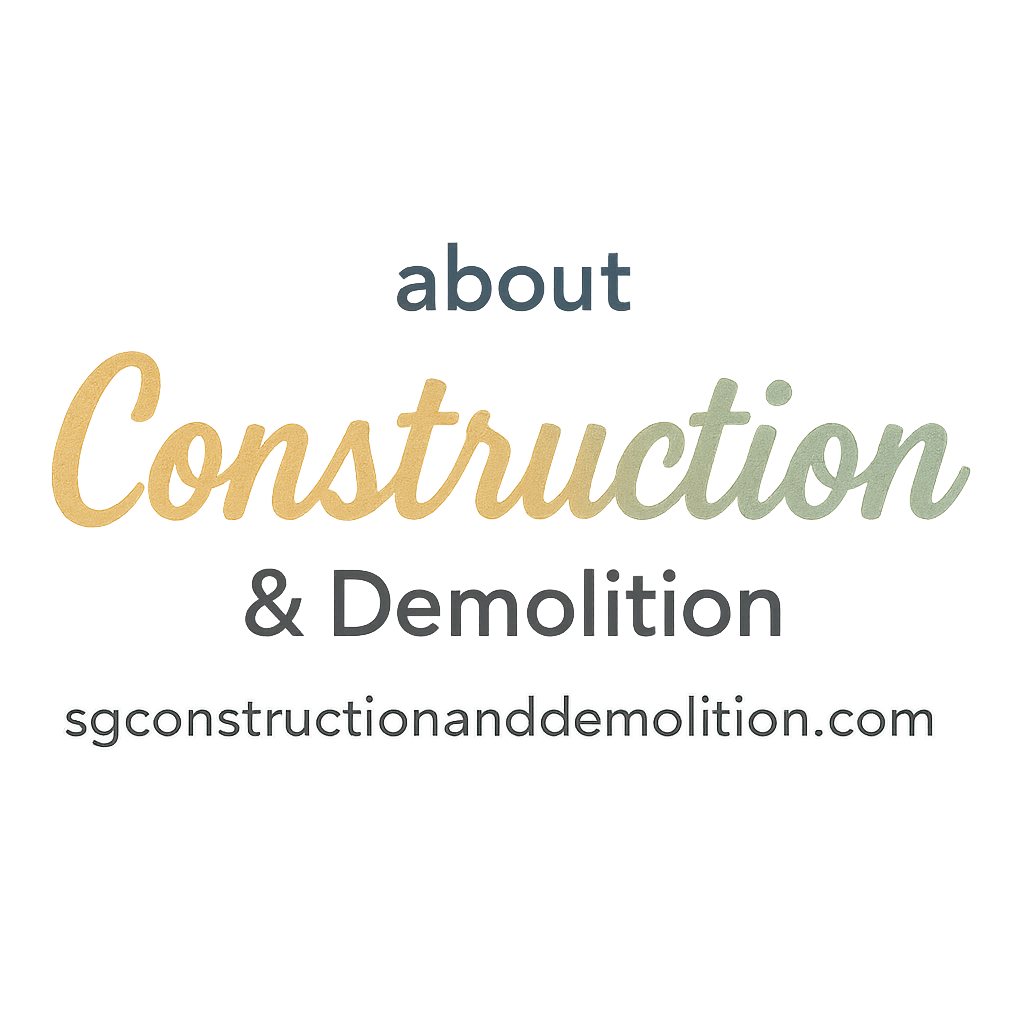Introduction to Demolition in Construction
When most people think of construction, they imagine buildings going up—not coming down. But demolition is just as critical as building. Whether you’re making way for a new project or dealing with hazardous old structures, knowing the different demolition methods used in construction sites can make all the difference.
In this guide, we’ll break down 10 major demolition techniques, why they matter, and when to use each one. Whether you’re a beginner curious about the basics or a pro brushing up on your skills, this article’s for you.
Why Demolition Matters in Modern Construction
Demolition for Safety
Old, unsafe structures can pose serious hazards. Demolition helps remove buildings that are structurally compromised, full of asbestos, or otherwise dangerous. Before any new construction begins, it’s often safer—and smarter—to tear down what no longer serves a purpose.
Demolition for Renovation and Urban Planning
In cities, space is tight. Often, old buildings must be removed to make room for better, more energy-efficient designs. Demolition is a key step in urban renewal and smart development.
If you’re interested in learning the basics of construction, check out our article on Construction Basics.
Factors That Influence the Choice of Demolition Methods
Before swinging a wrecking ball or setting up explosives, several factors must be considered:
Site Conditions
Is the building in a crowded urban area or in the middle of nowhere? Site access, neighboring structures, and weather can dictate your method.
Building Materials and Structure
Steel frame? Brick? Concrete? Different materials require different demolition strategies and tools.
Environmental and Safety Regulations
Modern demolition must meet environmental laws and protect worker and community safety. If you’re planning a project, explore our detailed guide on Planning and Safety.
1. Implosion Demolition
How Implosion Works
Implosion uses carefully placed explosives to collapse a building inward. It’s dramatic, effective, and requires expert-level planning and precision.
When Implosion is Best Used
Large buildings in open areas benefit from implosion. It’s not ideal in tight urban environments but works great for stadiums or towers.
Want to dig deeper into demolition techniques? Visit Demolition Techniques.
2. High Reach Arm Demolition
Benefits of High Reach Arm Demolition
High reach excavators equipped with specialized attachments break down buildings piece by piece from the top down. It’s safe and effective for structures over 20 meters tall and minimizes dust and debris.
This method is often paired with modern tools—read more about what powers these machines in Tools & Equipment.
3. Wrecking Ball Demolition
Classic but Rare
We’ve all seen the iconic wrecking ball, but it’s not as common today. It’s powerful but lacks precision and can be dangerous in populated areas. Still, it remains effective for certain wide-open job sites.
Want to know more about heavy machinery? Check out all articles under equipment.

4. Selective Demolition (Deconstruction)
Environmentally-Friendly and Smart
Selective demolition involves removing certain parts of a structure while leaving the rest intact. It’s ideal for renovations and sustainable projects that aim to reuse materials. This approach aligns well with green smart trends in construction.
5. Manual Demolition
Ideal for Tight Urban Spaces
Sometimes, the best tool is a good pair of hands. Manual demolition uses hand tools and is great for small projects or locations with limited equipment access. It’s labor-intensive but gives the highest level of control.
Explore this method in-depth under our beginners tag.
6. Crane and Ball Demolition
Power with Precision
Similar to wrecking ball demolition, but more refined. A crane gives you better control, especially when dropping or swinging heavy tools to knock down specific parts of a structure.
It’s often used in conjunction with other modern construction methods.
7. Hydrodemolition
Water Pressure Precision
Using high-pressure water jets, hydrodemolition is perfect for removing damaged concrete without harming the surrounding structure. It’s clean, eco-friendly, and excellent for bridges and parking decks.
This technique is part of the innovation wave in the smart tech category.
8. Mechanical Demolition
Types of Heavy Equipment Used
Mechanical demolition relies on machines like bulldozers, excavators, and loaders. It’s the go-to method for many general contractors. Quick, efficient, and suitable for most building types.
Want to learn about tools used in mechanical demolition? Visit our guide on power tools.
9. Thermal Lancing
Heat-Based Precision Cuts
Thermal lancing uses heat—usually from burning steel rods with oxygen—to cut through thick metal and concrete. It’s used in situations where traditional tools just won’t cut it (literally!).
This is an advanced demolition option often featured in innovation topics.
10. Explosive Demolition
Safety Considerations and Planning
Different from implosion, explosive demolition might target specific beams or walls to bring down parts of a structure in a controlled way. It requires expert planning and permits. Explore planning tips for more on this.
Demolition Safety Tips for Every Site
- Always assess the site and surrounding area.
- Use the right personal protective equipment.
- Communicate demolition plans with the entire team.
- Make sure permits and inspections are in order.
- Consider public safety if demolition happens in populated areas.
Discover even more safety tips and planning ideas at Planning & Safety.
Tools and Equipment That Power Demolition
Demolition methods are only as good as the tools you use. Whether it’s hydraulic hammers, shears, crushers, or hand tools, having the right gear makes all the difference.
For more gear breakdowns, browse our tools & equipment section.
Demolition and Smart Green Trends in Construction
Green construction isn’t just about building—it’s about tearing down smart, too. Deconstruction, recycling materials, and minimizing noise/dust are all part of the green trend. Check out the latest green smart trends.
Common Myths About Demolition Techniques
- Myth 1: All demolitions are dangerous explosions.
- Myth 2: You can’t recycle old materials.
- Myth 3: Demolition is always fast and easy.
- Myth 4: Only large buildings need demolition planning.
Learn more at our myths and misconceptions tag.
Conclusion
Demolition is more than smashing things down—it’s about precision, planning, and purpose. With the right method, you can take down structures safely, smartly, and sustainably. Whether you’re dealing with a residential home or a towering office block, knowing these 10 demolition methods used in construction sites will help you pick the right approach.
Keep learning, stay safe, and don’t forget—the future of construction starts with smart demolition.
FAQs
1. What is the safest demolition method?
Manual and selective demolitions are among the safest because they offer the highest control.
2. How long does a demolition project usually take?
It varies—small buildings might take days, while large structures can take weeks or even months.
3. Can demolition be done in a crowded urban area?
Yes, using manual, selective, or high-reach arm methods helps minimize disruption.
4. What happens to the debris after demolition?
Much of it is recycled or sent to landfills, depending on the material and demolition method used.
5. Do I need a permit to demolish a building?
Absolutely. Local laws typically require permits, inspections, and sometimes environmental clearance.
6. Is explosive demolition legal everywhere?
No, it’s heavily regulated and usually only allowed with strict planning and expert handling.
7. Where can I learn more about tools and techniques?
Explore our full library at SG Construction and Demolition.


